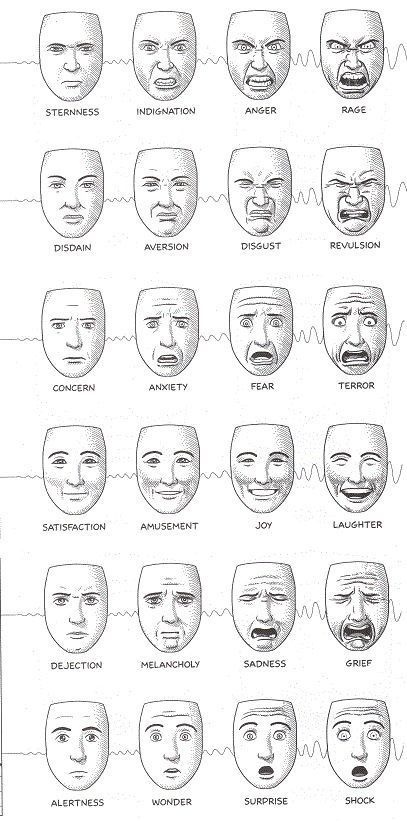English, like many languages, has lots of names for different emotions.
The illustration below shows a variety of emotions organised by intensity, such as disdain through to revulsion, or satisfaction through to joy.

You could debate the labels in this illustration, and the execution of expressions, but you get the idea.
- Notice that if you look at the facial expressions, you can probably name the emotion (at least roughly).
- And notice that if you look at the name, you can probably imagine the facial expression that would go with it (at least roughly).
This is what happens when we name an emotion in a story: we tell the reader what the character is feeling and leave them to imagine what that might look like.

